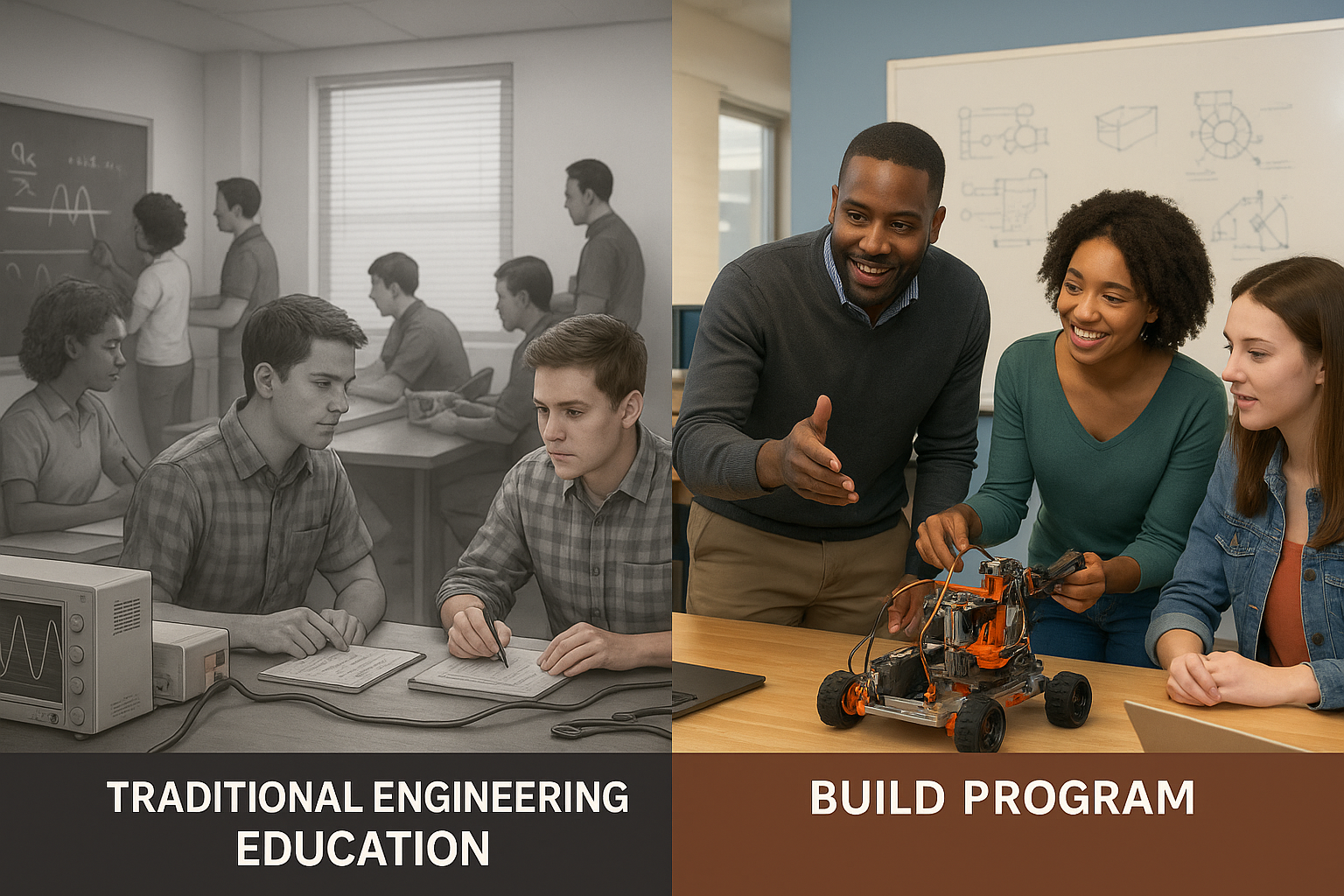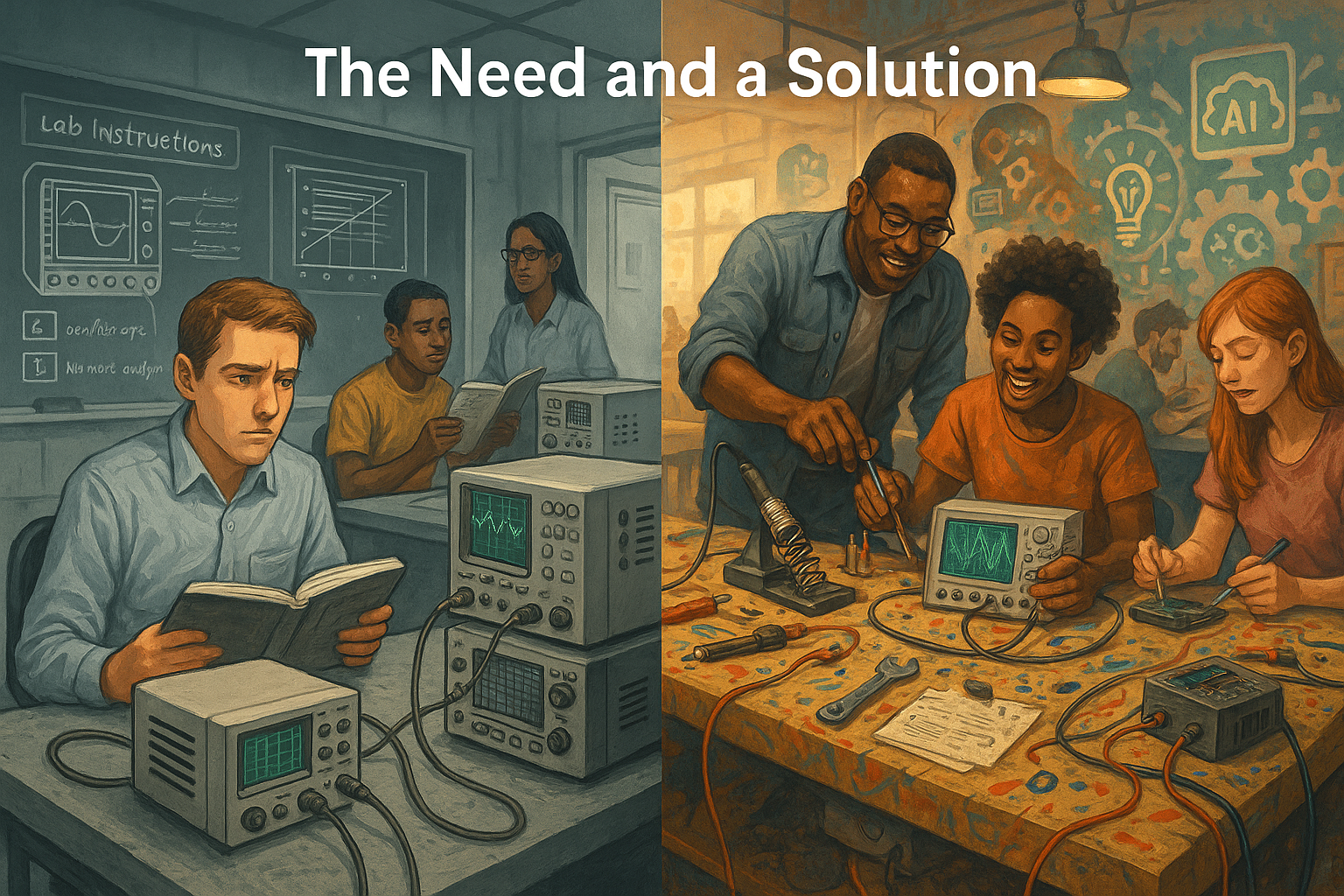The need and a solution
There's a widely acknowledged concern about our country's technical talent shortage. However, our perspective differs from the prevailing fear, and we want to help solve this national problem. There is good news we can leverage.
We do see some positive developments in the US recently, such as a growing maker community. We have a large number of people interested in building things again! Many individuals are keen on hands-on creation, but they lack the knowledge and skills to tackle substantial projects beyond 3D printing and Arduino programming. Our goal is to channel this national interest and steer their enthusiasm toward engineering. Although maker spaces and robotics clubs offer creative outlets, they often do not focus on core engineering principles such as optimization, structure, constraints, and tradeoffs. They do not have a way to learn how to turn these principles into manufacturing. They may not know they want to be an engineer. We aim to leverage this surge in interest to enhance engineering education.
Our projects do not offer step-by-step instructions like traditional lab courses. Instead, they challenge students to think critically, solve problems, and implement practical solutions. This opportunity to gain hands-on experience and an understanding of the engineering process that is vital for freshman engineering students. Long gone are the days where a significant percentage of incoming engineering students have had shop classes in high school, worked on their own cars, or generally have built or repaired things in their everyday life. While some have participated in robotics clubs and other similar activities, this is now a small percentage of the student body.
The BUILD program is about more than just individual projects; it's about nurturing the next generation of engineers who can adapt to the rapidly changing demands of the field. The program aims to create an environment that truly prepares students for the challenges and opportunities of 21st-century engineering.
Designing tests has become more difficult with modern technology. Much of today’s technology is encased in a ‘black box’ and we now have limited access to internal test points, with many functions now integrated into one chip. Learning to develop and generate test inputs/signals has become an art and that art is not being taught in most programs. Despite teaching graduates from dozens of schools, we rarely encounter one with even a basic command of an oscilloscope. They have gone through a few labs in school where they followed explicit, step-by-step instructions — where to turn knobs, what buttons to press in what order, and what to write in their report — without truly learning to understand or use the equipment, and they have no idea what's going on under the hood. If presented with an unknown signal and ask what it is, they are at a loss. They don’t know where to start. This is uniform across graduates from dozens of schools who have worked in our labs and classrooms.
One of our goals for the BUILD program is to have students build their own test instruments including oscilloscopes and network analyzers. While we have no illusion that their test equipment will be superior to commercial models like those from Keysight or Tektronix, the educational value is immense. When students design, build, and use rudimentary equipment themselves through guided discussions, they develop a profound understanding of the machine’s capabilities, and its limitations. This hands-on experience provides a solid foundation that is impossible to achieve following rote procedures in a lab overseen by overtaxed graduate students.
Summary: What’s in this for you?
When you go through the BUILD program we bridge technical gaps you have - a gap between design engineering and manufacturing, a gap between agile makerspace expertise and deep engineering expertise, a gap between a generalist and deep technical expertise.


